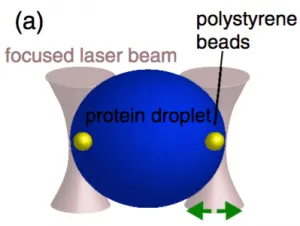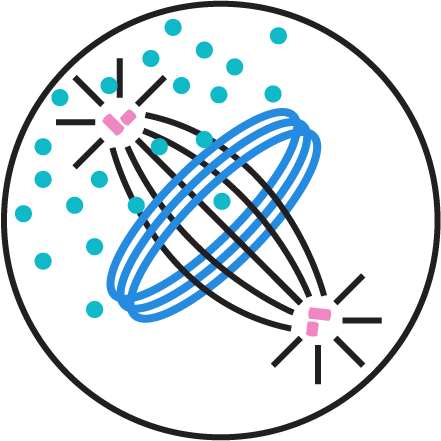An increasing number of proteins with intrinsically disordered domains have been shown to phase separate in buffer to form liquidlike phases. These protein condensates serve as simple models for the investigation of the more complex membraneless organelles in cells. To understand the function of such proteins in cells, the material properties of the condensates they form are important.

Fig: scheme of the set up based on a dual optical trap
Louise and her coworkers now developed a novel method based on optical traps to study the frequency-dependent rheology and the surface tension of P-granule protein PGL-3 condensates as a function of salt concentration. Have a look at the pdf or follow the link below.
